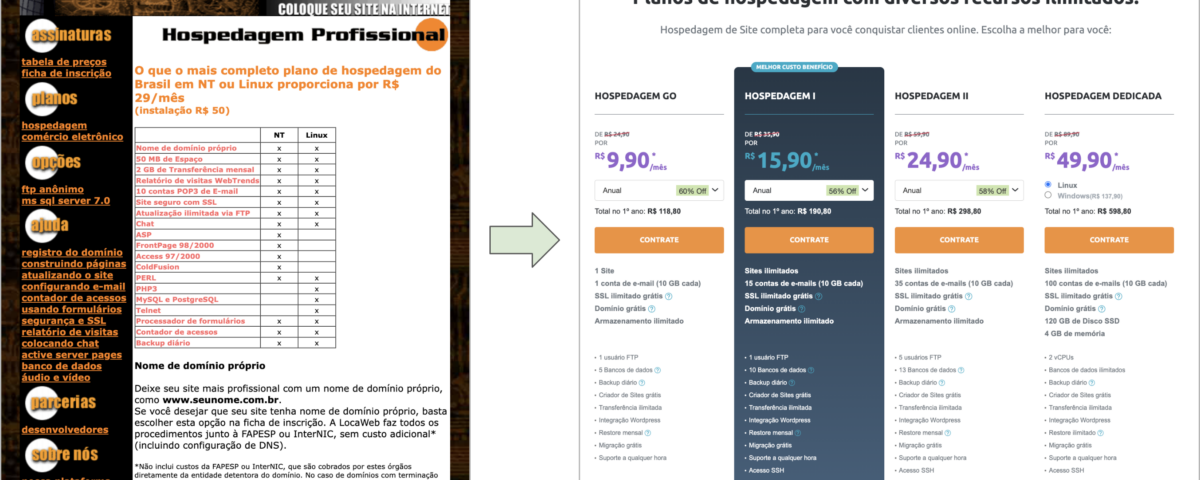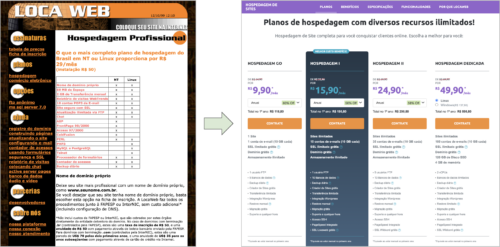
The Famous Product Discovery
11 de June, 2024
Another way to show the product vision: a letter from the client
22 de June, 2024I’m going to take a break from the articles I’m publishing, which are chapters from my latest book, “Digital transformation and product culture: How to put technology at the center of your company’s strategy,” to discuss a topic that I realized I didn’t cover in sufficient depth.
This year, I intend to dedicate myself to talking more about the topic of discovery as part of the work on a new edition of my first book, the “Startup Guide,” whose first edition is from 2011 and the 2nd edition is from 2017. Now I talked here about:
- Why business people hate discovery
- Discovery is not a process
- Discovery is not a process; part 2
- Could there be situations where discovery is not necessary?
- The two sides of discovery
- The concept of MVD (Minimum Viable Discovery)
- Solution discovery, where the magic of innovation happens
This list of articles is missing a topic that is a much talked about concept among startups but which I have not yet talked about in a structured way.
The so-called product-market fit
Anyone who knows me knows that I like clear definitions, so let’s start with the definition of product-market fit:
Product-market fit is the degree to which a product satisfies a strong market demand. (Source: Wikipedia)
This term was popularized in the mid-2000s by Marc Andreessen, co-founder of Netscape and investment fund Andreessen Horowitz, when he told startup founders that “the only thing that matters [for a startup] is getting to the product- market fit.”
Without a doubt, having product-market fit, or PMF as it is commonly abbreviated, is essential for the survival of startups and any company. However, when we say phrases like “getting to the PMF,” we can fall into two fallacies:
Think PMF is yes or no
Thinking that once you reach PMF, you just have to escalate
Let’s dive deeper into these 2 fallacies.
Fallacy #1: Thinking that PMF is yes or no
Many people believe that having PMF is a question of yes or no—either you have product-market fit or you don’t. But PMF is not a 0 or 1 concept. The definition itself states that it is “the degree to which a product satisfies a strong market demand.” This degree of satisfaction means that your product can satisfy a little, can satisfy a lot, may not satisfy, or maybe completely satisfy.
Sean Ellis, author of the book “Hacking Growth” and Dropbox’s first marketing person, created a test to help people know if they have some product-market fit. It’s called the “Sean Ellis test” or “40% test”, where we ask customers and users of a product how disappointed they would be if they could no longer use the product:
- Very disappointed
- A little disappointed
- I wouldn’t be disappointed
- No longer use the product
When you have 40% or more people who say they are “very disappointed” if they can no longer use the product, Sean Ellis says there are good chances of having the product-market fit of your product with this group of people. Jag Duggal, CPO of Nubank, said in an episode of “Lenny’s Podcast” that they use the 40% test with all the new features they intend to launch but that, since “Brazilians are culturally happier than the global average” at Nubank they decided to increase the number of “very disappointed” to 50%.
Lenny Rachitsky has compiled a list of several definitions of product-market fit, including the 40% test and several other ways to understand a product has achieved product-market fit. Marty Cagan said in a 2014 article on product-market fit that the 40% test is good for B2C products and that for B2B products, he recommends having some referable customers who are customers willing to give positive testimonials about your product. In this article, he says he usually recommends having at least 6 referenceable customers.
As we can see, there are several definitions of PMF, and they all have some degree or level, which makes it clear that PMF is not a binary concept, like there is or isn’t.
We must remember that PMF has two components: the product and the market. This concept helps us understand how much a product solves a problem or meets a need of a group of people (market). This product may solve a problem very well for some people but not for others. When discussing product-market fit, we need to understand these nuances to better direct our decisions regarding the product.
Example: Conta Azul and over-the-counter retail customers
When I was at Conta Azul in 2017, we had more than 25,000 customers. That is, we already had some PMF. We had the habit of constantly visiting and talking to customers to understand how they used Conta Azul. I once had the opportunity to visit a store that sold creative gift items in Joinville. She was a very satisfied customer and was happy with the Conta Azul product and the service she received whenever she contacted us.
The Conta Azul product worked very well for companies in the service and industrial segments and for commercial companies selling products through orders. However, it did not work well for over-the-counter commerce companies, that is, stores that serve and sell products physically. This happened because we did not have a cashier or POS (point of sale) functionality. The checkout front is the last stage of the purchasing process within the retail trade. This is the moment when the customer completes the acquisition process and makes payment for the purchased product at the “checkout counter”.
For this reason, we were very curious to understand how that customer who sold creative gift items was so satisfied with Conta Azul when we didn’t have a key functionality for her daily operation. During the visit, we asked her to tell us what her daily operation was like. She said throughout the day, she made sales and wrote down all the customer details in a notebook. When she arrived at the end of the day, she closed the store and accessed Conta Azul to transfer all sales made that day to the system, issue invoices, and have complete control of her financial flow.
This visit made it clear that we definitely did not have a high level of PMF for this type of client, which motivated us to build the Online POS Front functionality.
Fallacy #2: Thinking that once you reach PMF, you just have to escalate
When we reach a certain degree of product-market fit, we may get the impression that we must now focus exclusively on scaling, that is, on increasing the number of customers and users of the product. We should focus on scaling, but that cannot be our only focus. We must continue developing the product and understanding more about the market, our customers, and our users. Your needs can and will change, and we must evolve our product to meet these new needs. Otherwise, this “success” of achieving some product-market fit will be quite ephemeral.
To maintain the product with some degree of PMF, product evolution is one of the main responsibilities of product management and the product development team.
Example: Evolution of Locaweb’s website hosting product over 25 years
Locaweb began operating in 1998, and its main product was Website Hosting. We can say with certainty that Locaweb’s Website Hosting product reached a good PMF level and is still sold today. However, even reaching a good level of PMF, there was always a concern to understand how the market and customer needs were evolving. See the differences between Website Hosting in 1998 compared to what is offered today:
| 1998 | 2024 | |
|---|---|---|
| Price | R$ 29,00 / month | From R$ 9,90 up to R$ 49,90 per month |
| Space | 50 MB | Unlimited |
| Data transfer | 2 GB per month | Unlimited |
| Programming languages and databases. | Windows (ASP, FrontPage 98/2000, Access 97/2000, ColdFusion, PERL) and Linux (Perl, PHP3, MySQL e PostgreSQL) | PHP 7.0, 7.1, 7.2, 7.3, 7.4, 8.0, 8.1, 8.2 e 8.3, MySQL 5.7, PostgreSQL 9.5 |
| Mailboxes | 10 | From 1 up to 100 |
It is not because Locaweb found a high level of PMF at its beginning that it was exclusively concerned with scaling. The team constantly evaluated new developments in the website hosting market and the evolution of customer needs to evolve the product and, thus, maintain a good level of PMF. If the product were not constantly updated, the PMF would gradually decrease until the product became irrelevant in the market and was no longer sold.
Workshops, coaching, and advisory services
I’ve been helping companies and their leaders (CPOs, heads of product, CTOs, CEOs, tech founders, and heads of digital transformation) bridge the gap between business and technology through workshops, coaching, and advisory services on product management and digital transformation.
Digital Product Management Books
Do you work with digital products? Do you want to know more about managing a digital product to increase its chances of success, solve its user’s problems, and achieve the company objectives? Check out my Digital Product Management books, where I share what I learned during my 30+ years of experience in creating and managing digital products:
- Digital transformation and product culture: How to put technology at the center of your company’s strategy
- Leading Product Development: The art and science of managing product teams
- Product Management: How to increase the chances of success of your digital product
- Startup Guide: How startups and established companies can create profitable digital products



